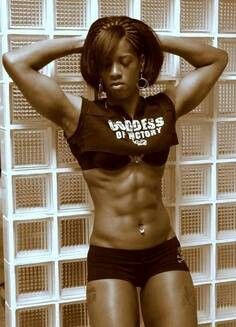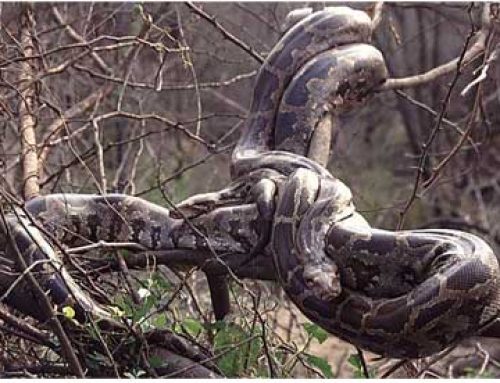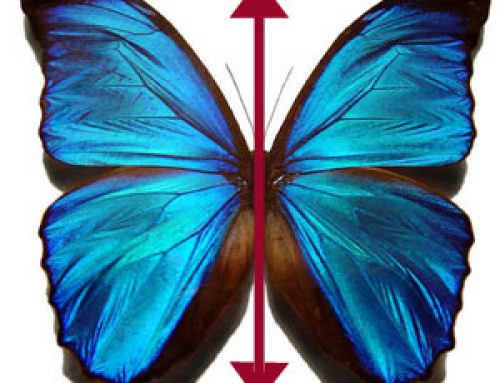
A black woman shows off her muscles
One-celled creatures don’t have any muscles; the ones that can move themselves use flagellae instead. Even after living creatures evolved that had a lot of cells, the early ones like hydras and sponges couldn’t move.
The earliest creatures that had muscles and could move on their own were flatworms, which evolved about 550 million years ago. Muscles are made of a special type of cell – a muscle cell – that is shaped like a long cylinder. Muscle cells have long strings of protein molecules inside them. When your nerves send electricity to the muscle cell, the cell releases calcium from a storage area called the sarcoplasmic reticulum, and the calcium joins onto the molecules of the protein strings. With calcium atoms added, these molecules take on a different shape, and now they have hooks. The hooks grab other protein strings and then shorten themselves; this shortens the whole cell. When all the cells shorten together, it shortens the whole muscle, and moves your leg.
Flatworms already had pretty complicated muscles: they had circular muscles that went around their bodies in rings, and an inner layer of long muscles that went all along their bodies, and a third kind of muscle that went from top to bottom. By using nerves to send messages to squeeze these different muscles, flatworms could crawl along the ground, and also lift their heads up and turn sideways to see what was going on.
Building muscle cells took a lot of energy, but being able to move around turned out to be worth the trouble. When animals evolved shells, and then interior bones, they had something to anchor one end of their muscles so they could pull harder with the other end. This allowed them to use their bones and muscles as levers. They could fly, swim, chew food, and run.
All vertebrates have three kinds of muscles – cardiac muscle, smooth muscle, and skeletal muscle. The cells of your heart are cardiac muscle; they are built to last a long time and be very reliable, and they can only do short, quick contractions (twitches). Your stomach, intestines, blood vessels, bladder, lungs, and uterus are made of smooth muscle cells. Smooth muscle cells are good at stretching. Mostly you don’t control your cardiac or smooth muscles consciously.
Skeletal muscle is the type of muscle cell that’s hooked to your bones – the muscles of your arms and legs that move your body. They can do either a short quick movement or a long slow movement, and you can control them. These are the muscles you can make stronger and bigger by exercising. Jumping rope, playing hopscotch, throwing balls, and doing push-ups are good ways to make your muscles stronger.
Learn by doing: what do muscles look like? How can I build more muscle?
Bibliography and further reading about muscles:




